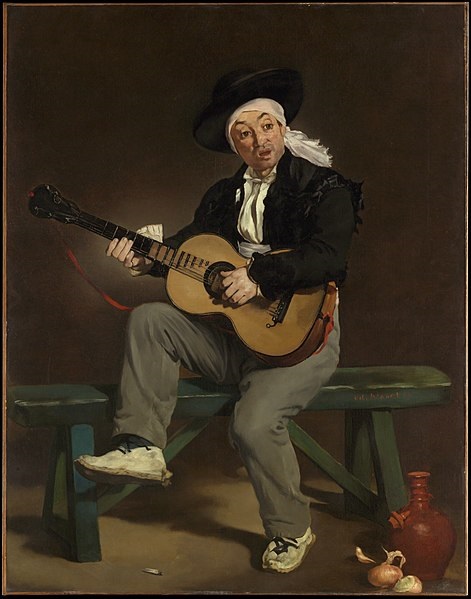
Flamenco is an art that leaves no one indifferent. Throughout its history, it has drawn the attention of different artistic disciplines. From dance, singing and guitarrist we find multiple references in the cinema, literature, sculpture or painting, among others. Perhaps the closest link is that between flamenco and poetry, because it is implicit in the lyrics that are interpreted in the form of popular songs or poems.
It is not the first time that we refer to the lyrics in flamenco and the sentimental load that they have, but today we are going to fix the attention on the painting and how different artists have immortalized the essence of flamenco through the brush along the history.
Spanish painters such as Picasso, Julio Romero de Torres, Santiago Rusiñol or Sorolla have shaped flamenco forms, colors, expressions and feelings through their works. But they are not the only ones, because to this list we must add other artists such as Henri Matisse, Robert Delanay, Gustave Doré or Francis Picabia, who have also reflected the passion of flamenco in their paintings.
There are several reasons that have led these artists to capture in their painting scenes of dancing and singing. To Gustave Doré, the romantic search for exoticism led him to outline his first flamenco references, when he went back through the 19th century, he toured Spain to make a series of reports for a travel magazine.

This artist reflected in his illustrations popular scenes of flamenco art, moments of which he enjoyed in the primitive cafés singers, sales or neighborhoods of Andalusia.
His drawings attest to the birth of movements such as the bowling school and the new styles that emerged as the jaleo de Jerez, the Malagueña or the zapateado.
Seeking inspiration in Spain, the impressionist painter Edouard Manet ran into flamenco and proof of this are works such as “El cantante español” (The Spanish singer) and “Lola de Valencia” (Lola from Valencia), a portrait dedicated to the first dancer of the Spanish Ballet company Camprubí.
The customary trend was set in the most playful part of flamenco, reflecting the most festive moments that took place in meetings, parties or weddings. Artists such as José Villegas portrayed Pastora Imperio and Ignacio Zuloaga was another artist who was attracted to scenes of Andalusian customs, with flamenco as the protagonist.

If there is a painter who is associated with flamenco, that is Julio Romero de Torres, who paid special attention to Andalusian women, as reflected in his pictorial works. This artist also portrayed Pastora Imperio, as well as La Niña de los Peines and La Argentinita.
Joaquín Sorolla, Gonzalo de Bilbao, Gustavo Bacarisas and José López Mezquita also welcomed the flamenco customs and types in their paintings, from their different artistic characteristics.
The dance is the element that is most repeated in theirs paintings, given the possibilities offered by the costumes of the costumes, the colors and the movements of the flamenco dancers.
At the beginning of the twentieth century, the most avant-garde trends were also set in flamenco as an art to leave embodied through painting. In this sense, Dalí and Picasso are the best known, artists who, in addition to painting about flamenco, were very linked to this art because of their way of life and their friendship with flamenco characters.
Lorca also had his role as a painter. Although Federico is known more for his literary career, the Granada artist left many drawings with clear flamenco inspiration.
We are sure that we leave in the inkwell an endless number of artists who have tried flamenco in their paintings. With this tour, we have proof of the importance and influence that flamenco has had and continues to have in the different artistic disciplines. Long live flamenco art!
© 2024 El Palacio Andaluz. All rights reserved.